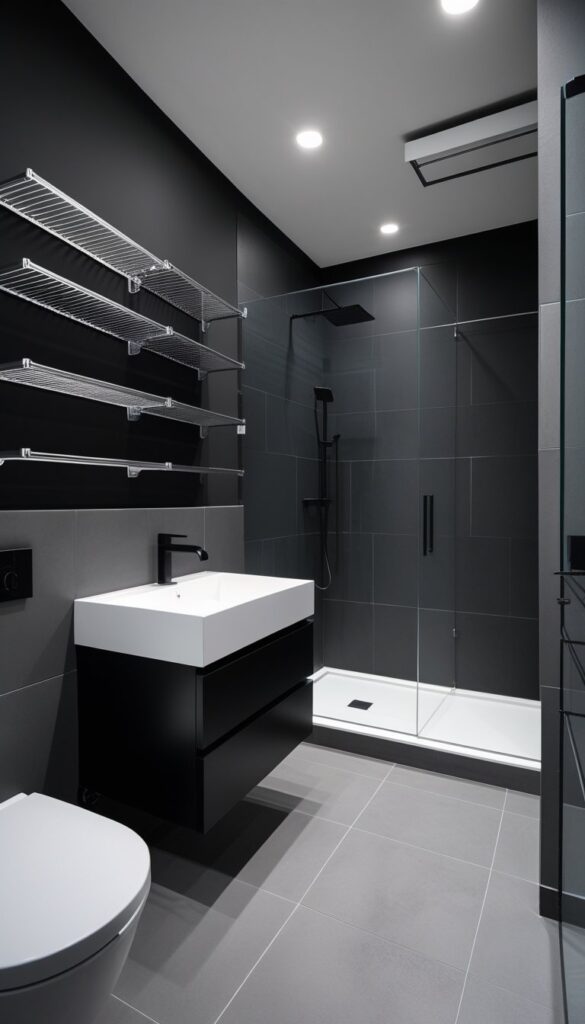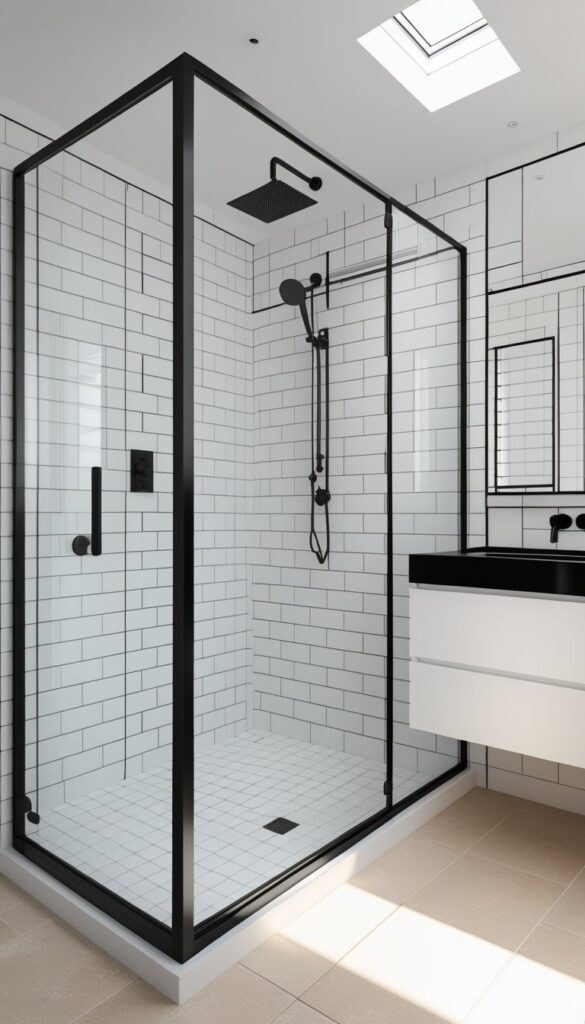15 Modern Living Room and Dining Room Combo Ideas
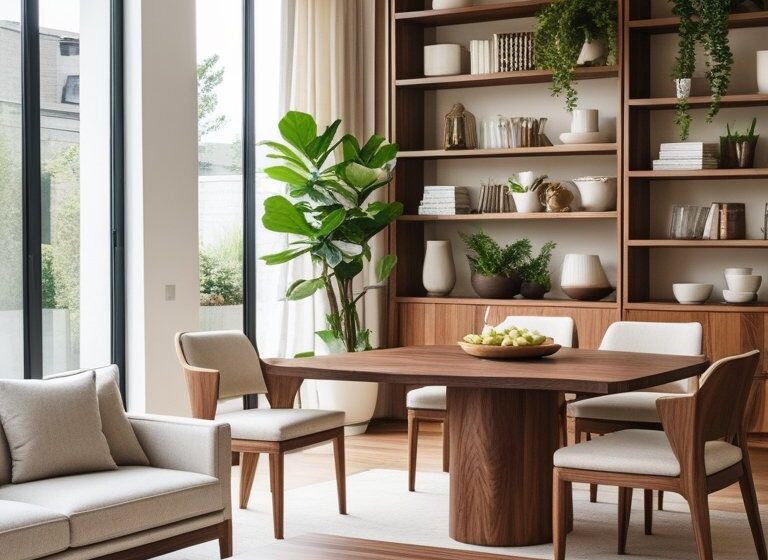
Modern living and dining room combos are becoming increasingly popular in open-concept homes. These integrated spaces demand a seamless flow between relaxation and dining, combining comfort, function, and visual continuity. With careful planning, you can design a shared area that feels cohesive, sophisticated, and highly livable.
1. Define Each Zone with Rugs
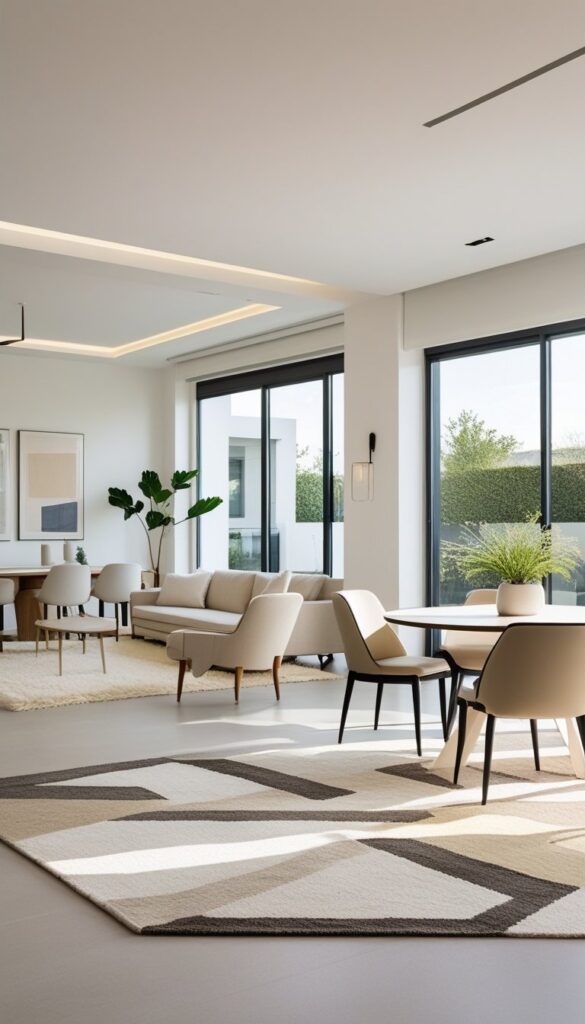
Area rugs are one of the easiest ways to define separate zones without breaking the open layout. Choose rugs with contrasting textures or subtle color variations to distinguish the living room from the dining area while keeping the palette unified.
2. Use Lighting to Anchor Each Space
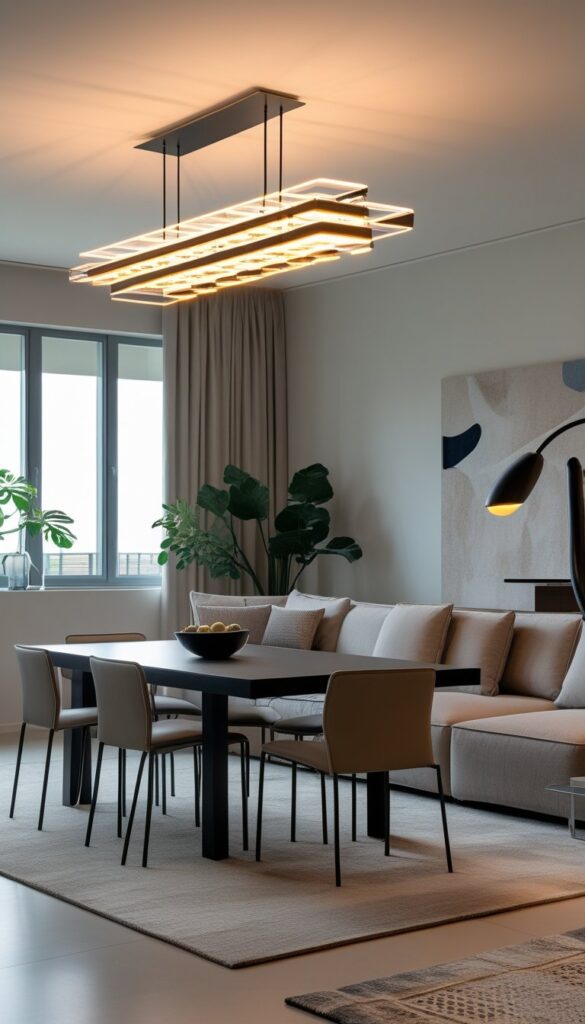
Lighting plays a vital role in creating structure within a combined room. Pendant lights above the dining table and floor lamps near the sofa help distinguish functions while adding ambiance and character.
3. Incorporate a Coordinated Color Palette
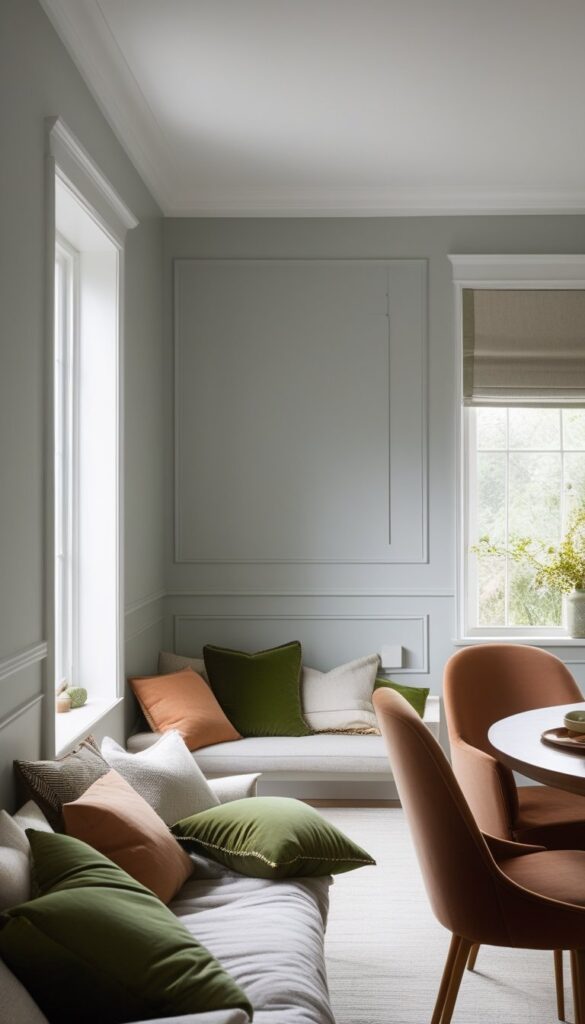
A coordinated color scheme ensures visual unity between the living and dining zones. Neutrals like gray, beige, or white can serve as the base, while accents such as navy, rust, or sage maintain interest across both areas.
4. Choose Low-Profile Furniture for Better Flow
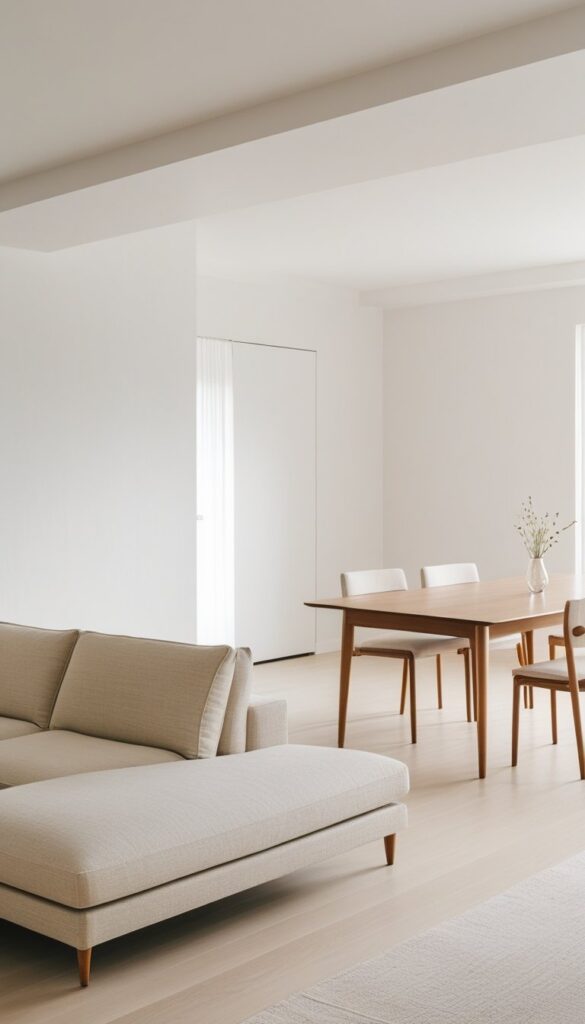
Furniture with clean lines and low profiles helps maintain an open, airy feel. This approach works especially well in smaller rooms, preventing visual clutter while keeping the area functional.
5. Use a Shared Focal Point
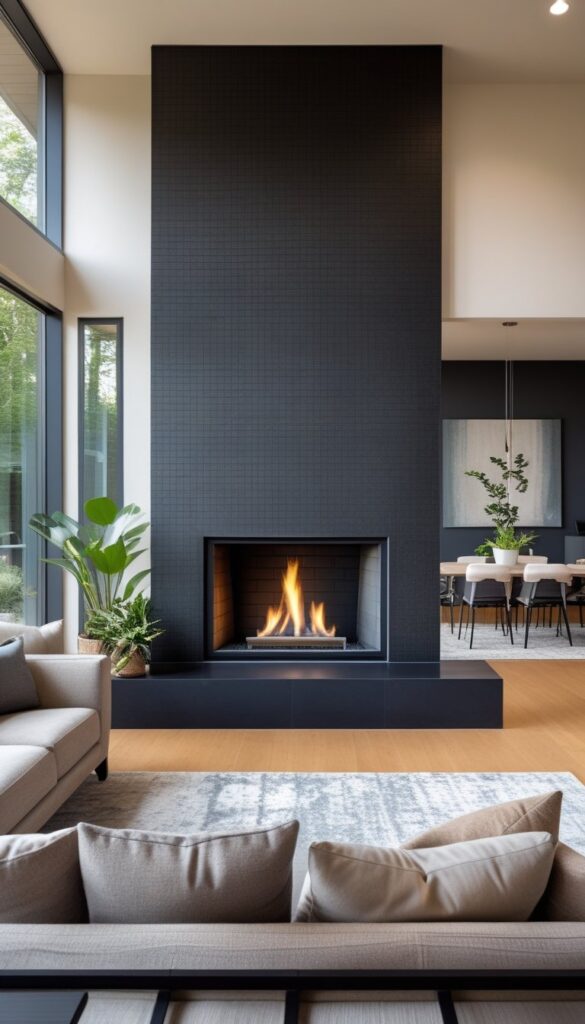
A shared focal point like a fireplace, art piece, or feature wall can link both zones naturally. This element anchors the entire room and draws the eye through the space without dividing it harshly.
Also Read:18 Cozy Living Room Ideas for Small Apartments
6. Add Built-In Storage for Functionality
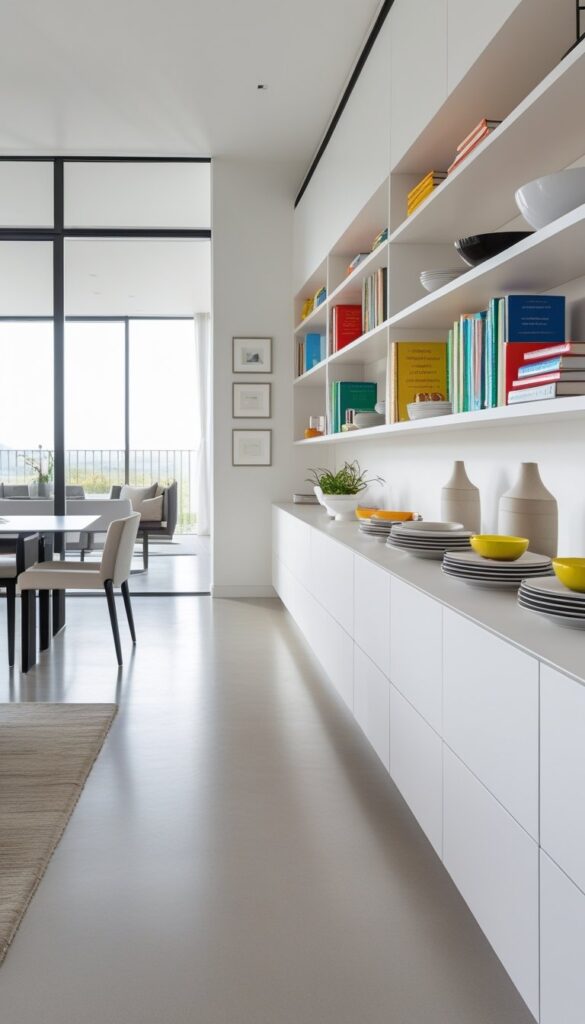
Built-in shelves or cabinets along one wall can serve both the living and dining areas. They reduce the need for separate furniture pieces and provide unified storage and display options.
7. Use Accent Walls to Subtly Separate Zones
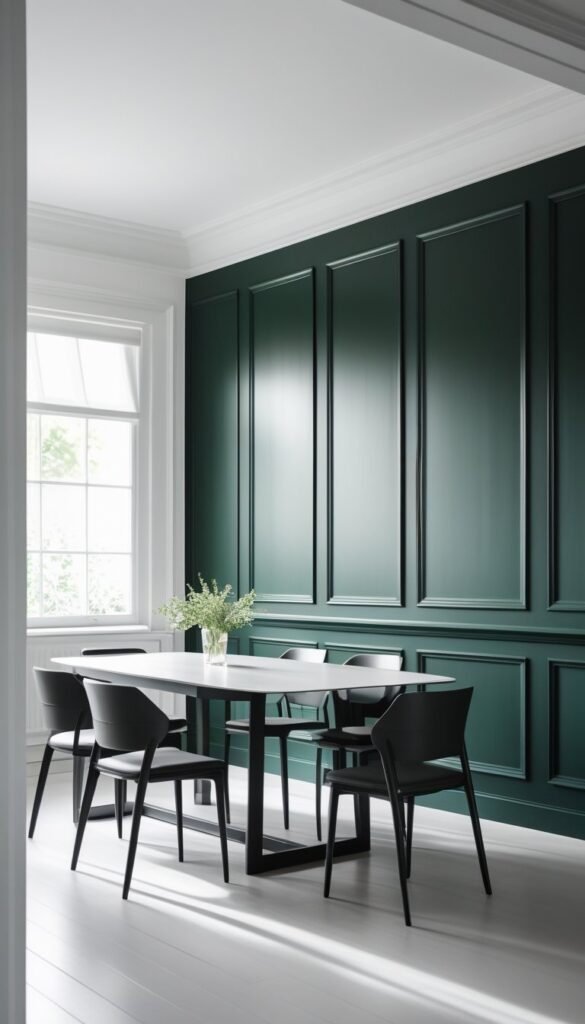
Paint or wallpaper can be applied to one part of the room to define either the dining or living area. This technique adds depth and allows you to maintain visual separation while embracing the open layout.
8. Create a Balanced Layout
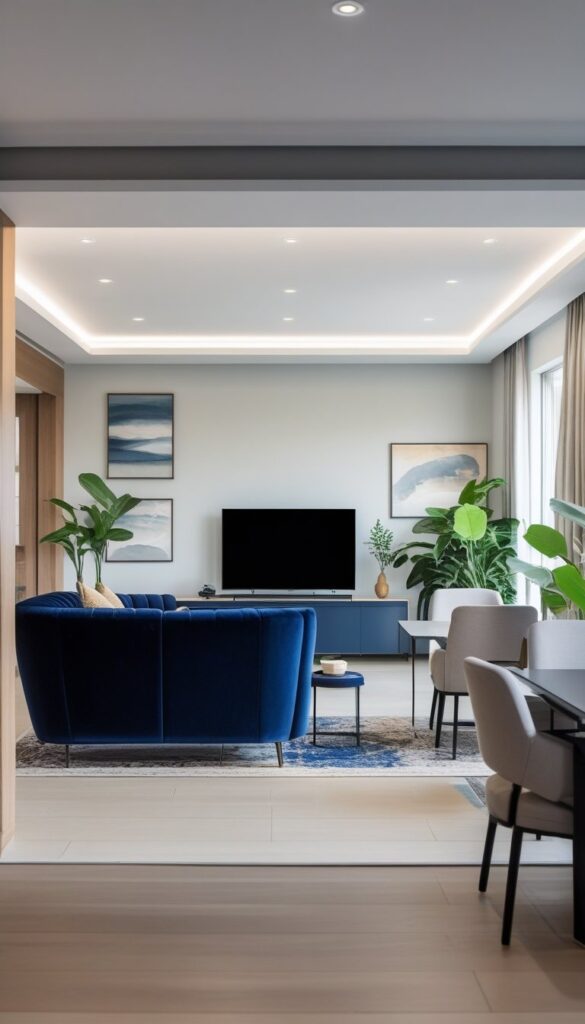
Balance is essential in a dual-purpose space. Position your furniture so the weight is evenly distributed—avoid crowding one end of the room while leaving the other feeling sparse or empty.
9. Use Sliding Partitions for Flexible Use
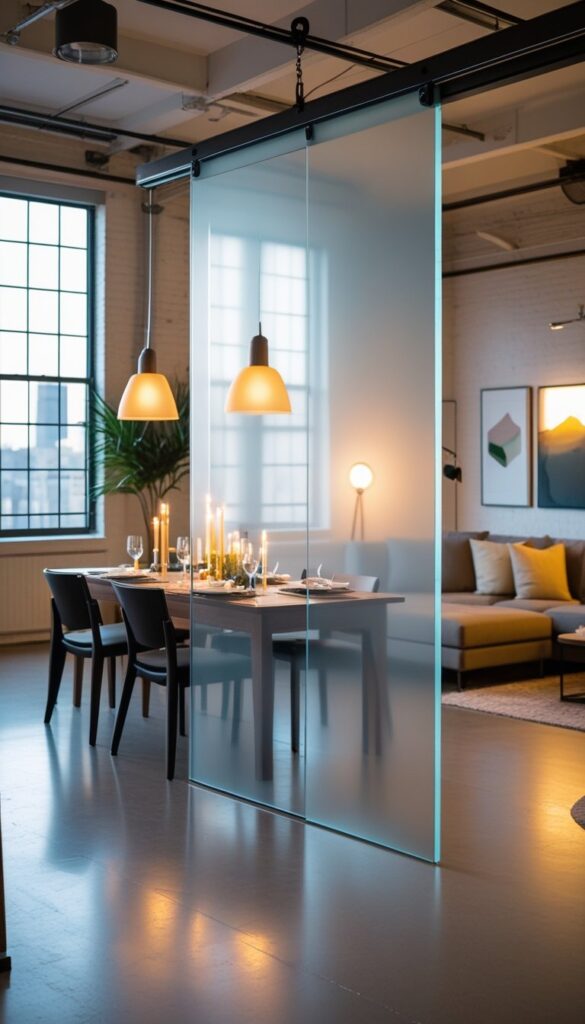
Sliding glass or wooden partitions offer the option to close off either the living or dining area when needed. This flexibility supports various needs, from hosting guests to enjoying quiet moments.
10. Highlight Flooring Transitions
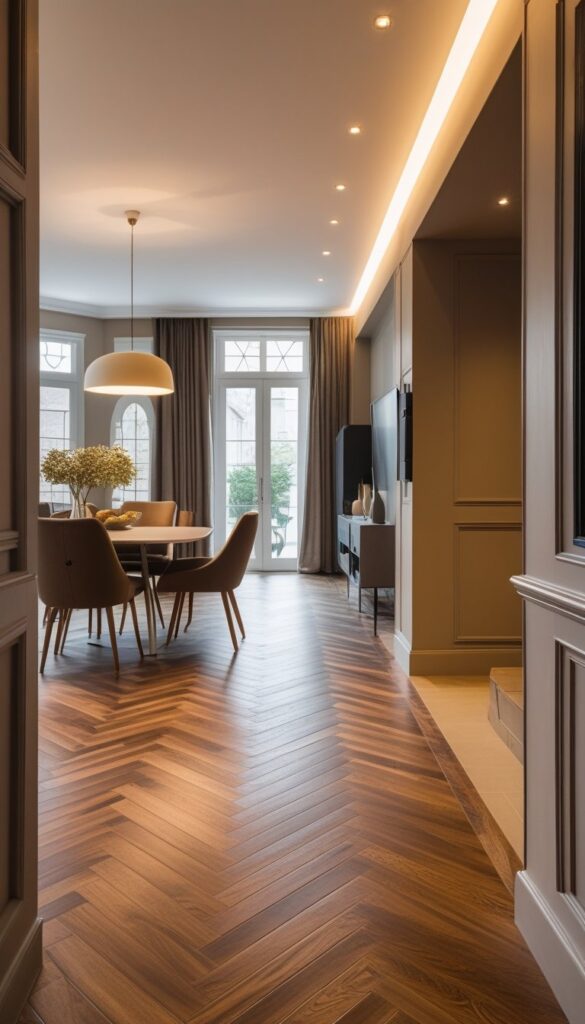
Subtle changes in flooring materials or patterns can signal a transition between living and dining areas. For example, using wood planks for the living space and large-format tiles for dining helps define zones.
11. Place a Console Table as a Divider
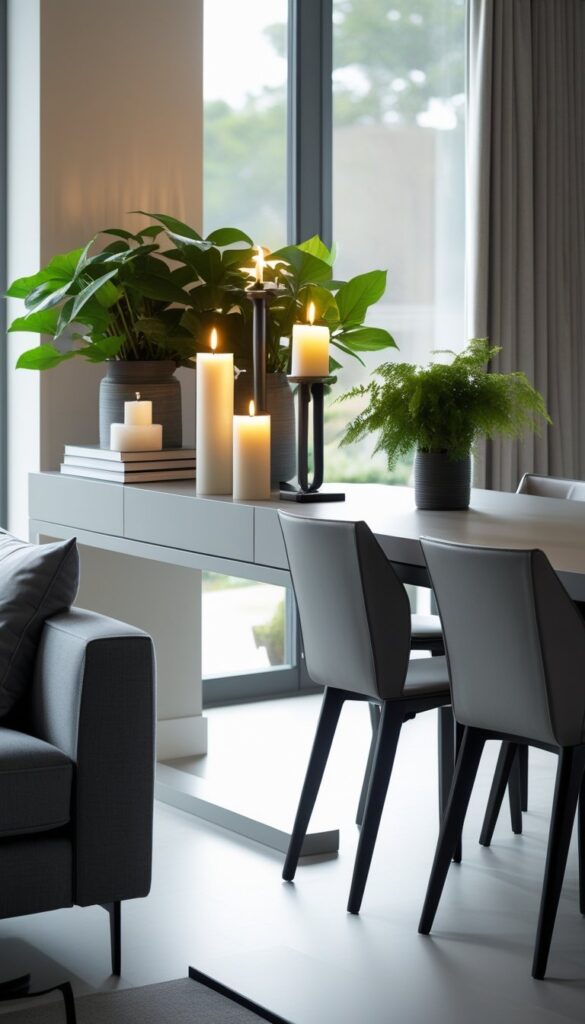
A long console table or low open shelving unit placed between the dining and living spaces creates a natural divider. It offers surface space for decor, lighting, or storage while maintaining flow.
Also Read:18 Inspiring Living Room Ideas for Apartment Living
12. Repeat Textures Across Both Spaces
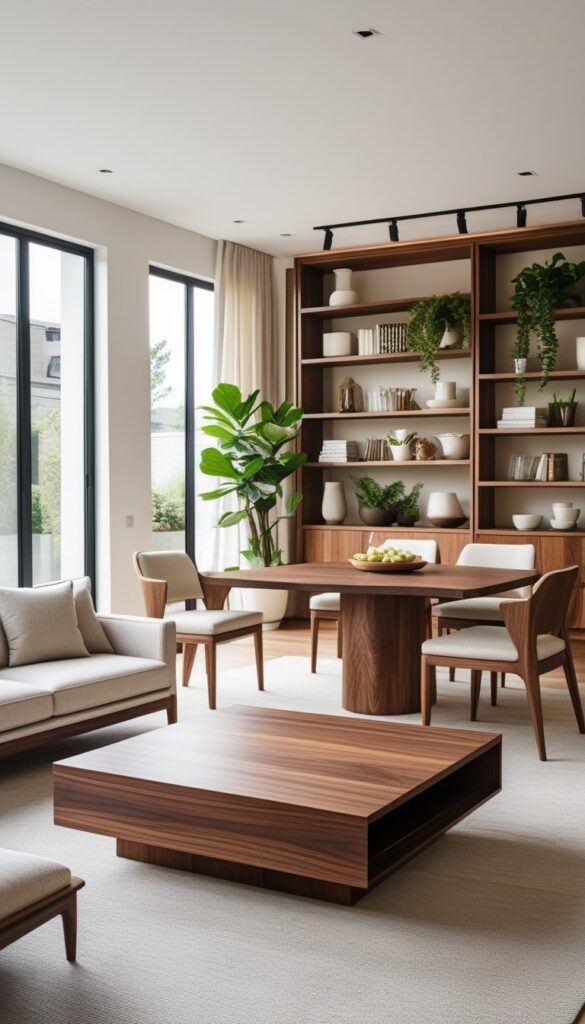
Using the same textures—such as velvet, wood, or metal—in both zones builds visual harmony. When finishes are consistent, the eye moves smoothly across the space, making it feel thoughtfully designed.
13. Frame the Dining Area with Artwork

Positioning artwork above or around the dining table helps define its presence within the open layout. Select pieces that reflect your color scheme and are consistent with the living room decor.
14. Use Symmetry for a Structured Look
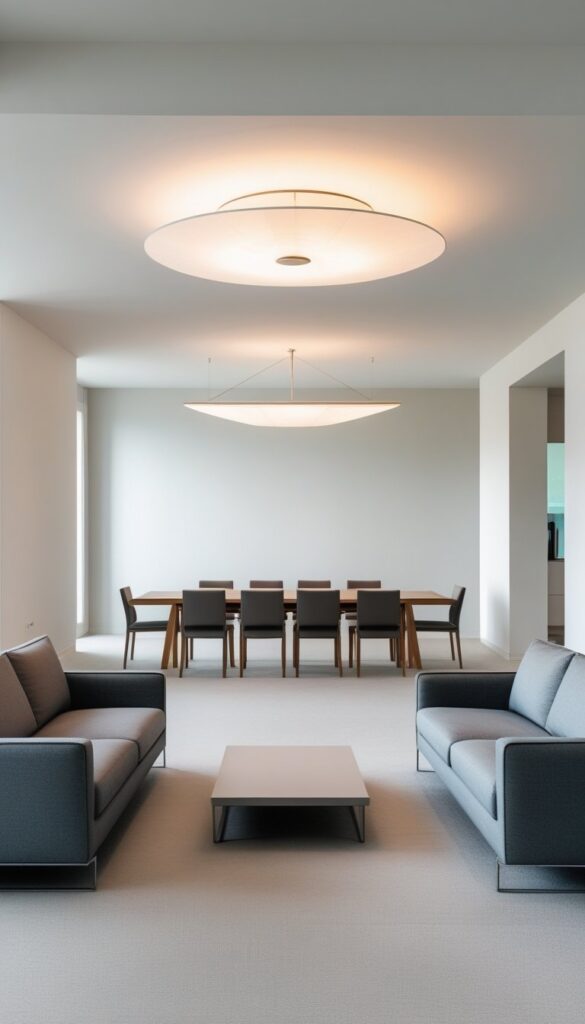
Symmetrical arrangements create a sense of order in shared spaces. Whether it’s paired chairs flanking a dining console or matching sofas across a coffee table, symmetry supports modern aesthetics.
15. Introduce Indoor Plants to Soften the Space
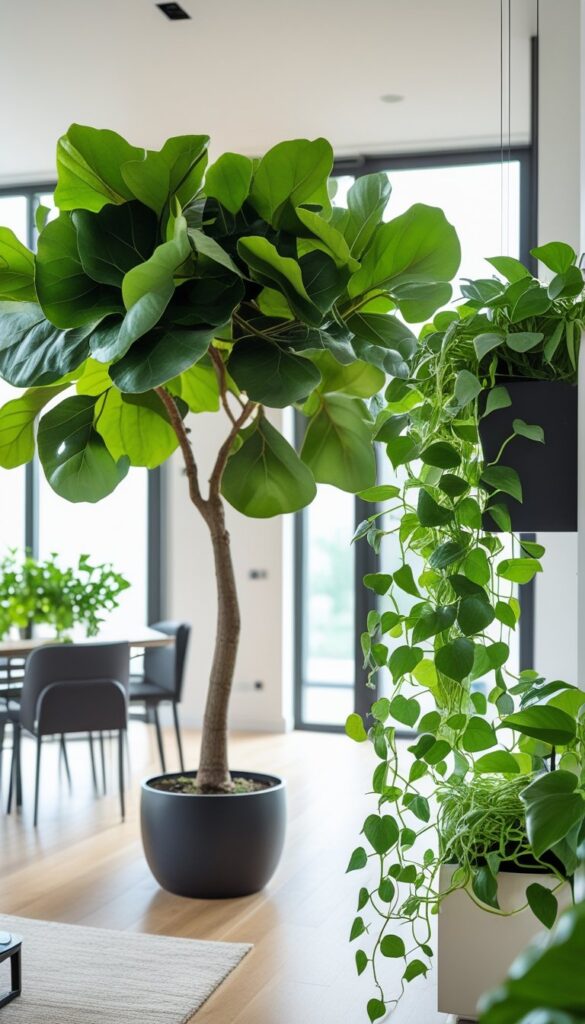
Plants bring softness and life into modern interiors, acting as natural dividers or visual connectors. Use tall plants to frame areas or smaller ones on dining tables and shelves to add texture.

